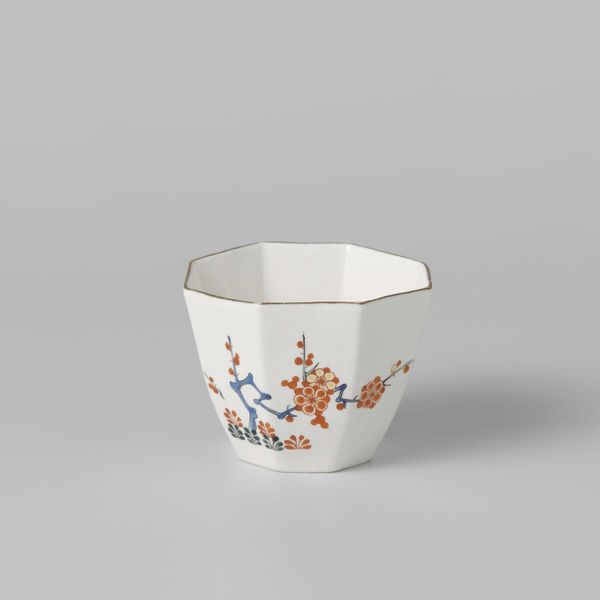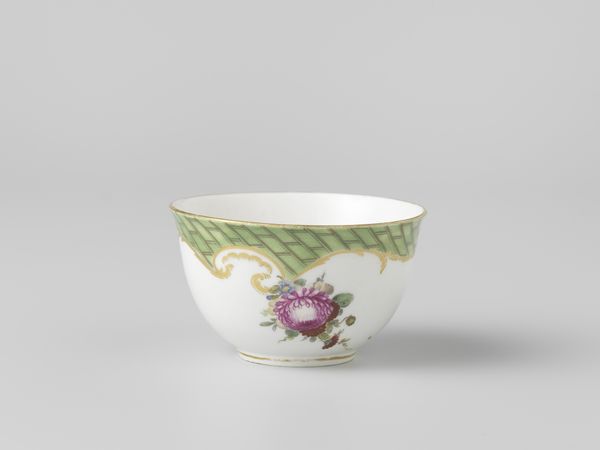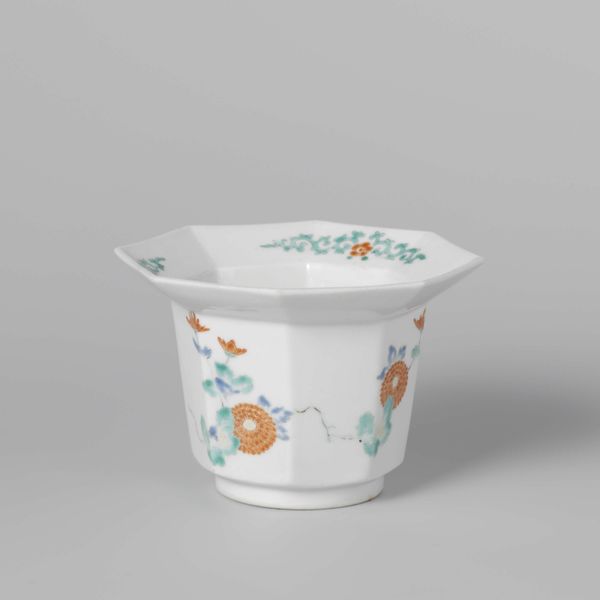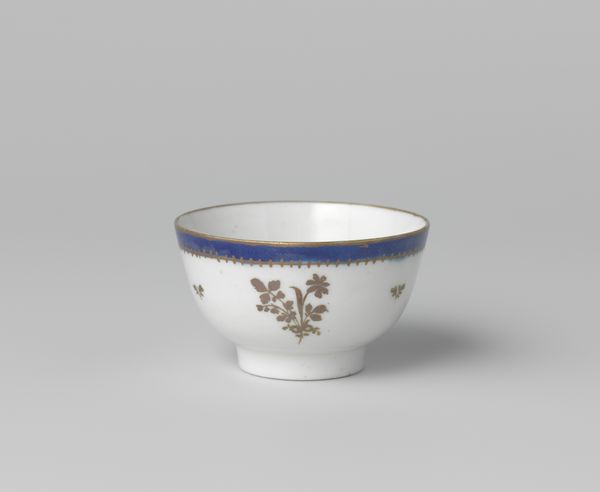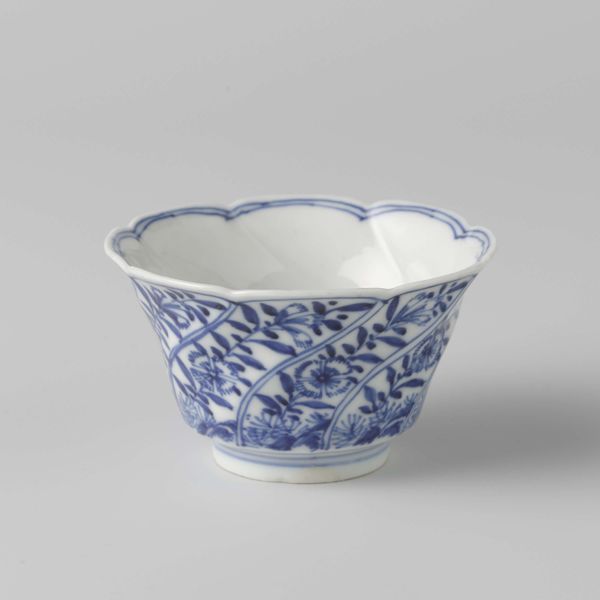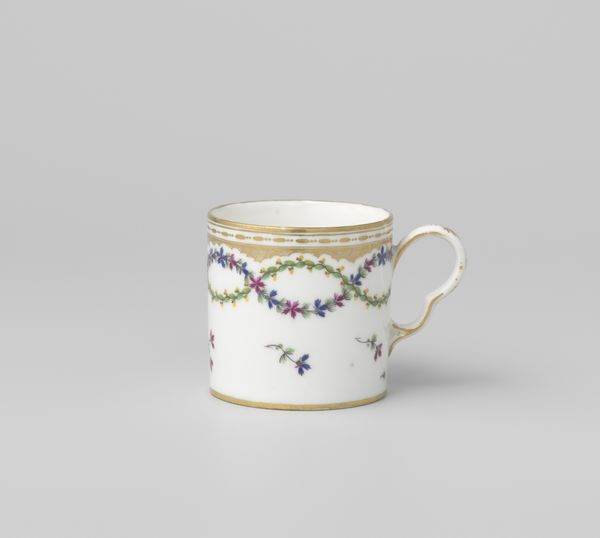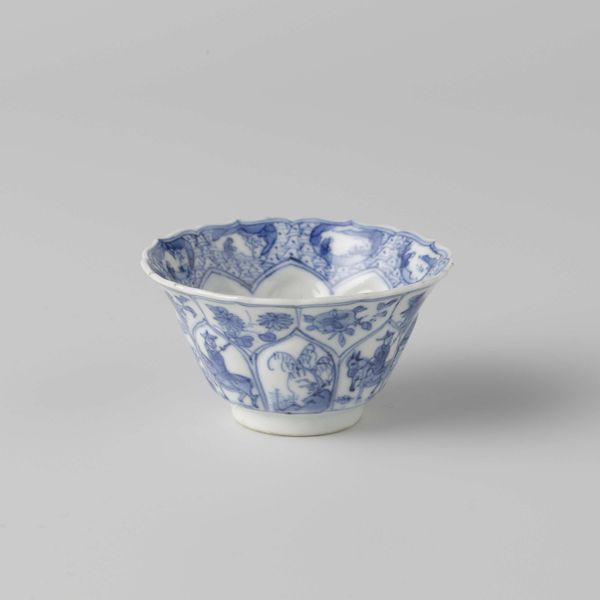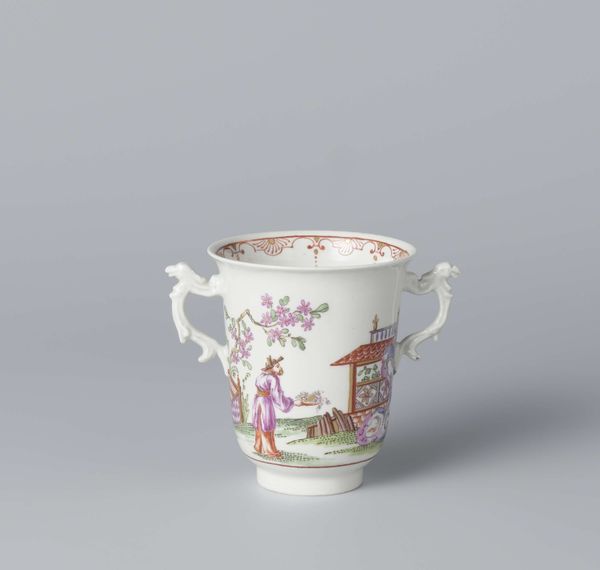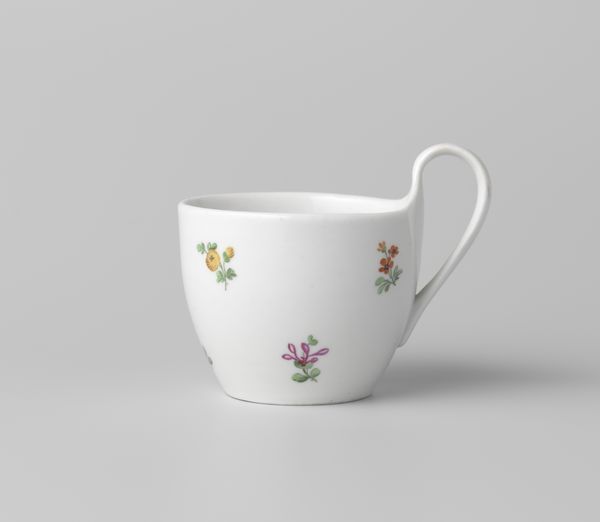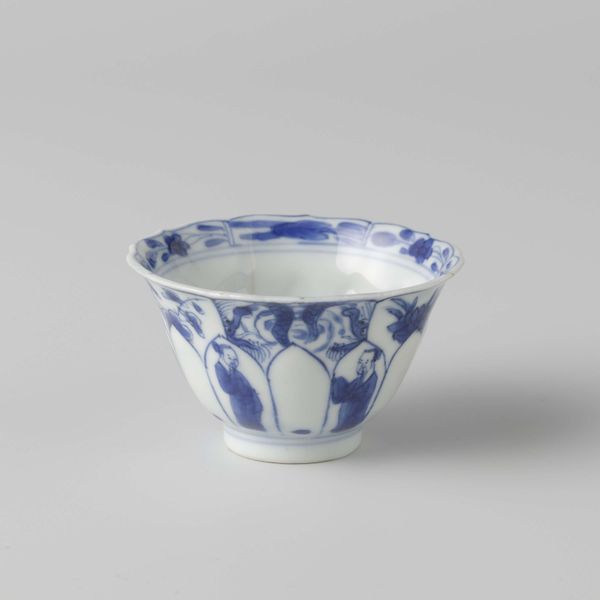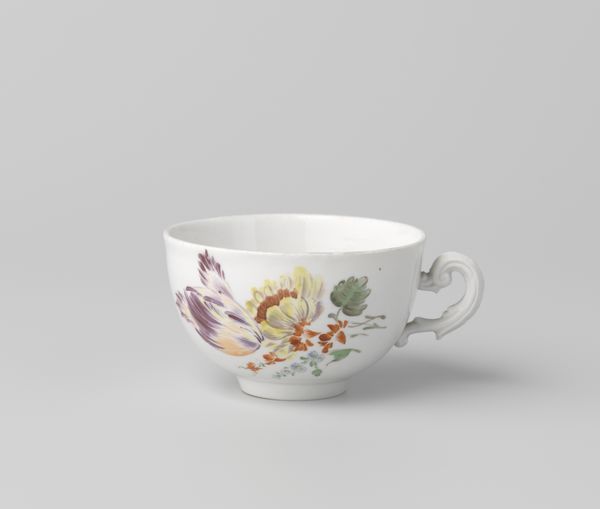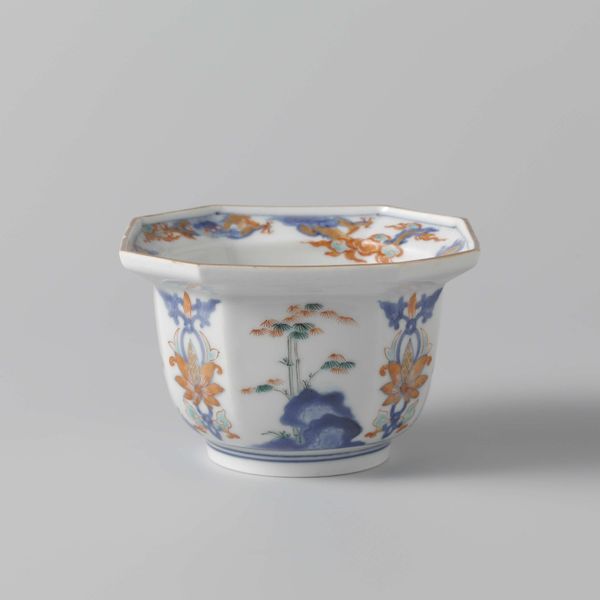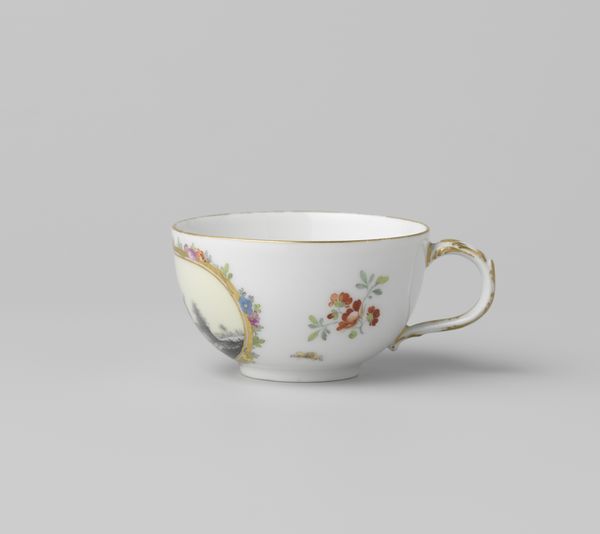
painting, ceramic, earthenware
#
painting
#
asian-art
#
ceramic
#
earthenware
#
decorative-art
#
rococo
Dimensions: height 5.9 cm, diameter 7.1 cm, diameter 3.4 cm
Copyright: Rijks Museum: Open Domain
Curator: Here we have a delicate example of Chantilly porcelain: a cup with birds and flowering plants, dating from around 1730 to 1750. It’s earthenware with a painted decoration. Editor: It’s lovely. The colors are so restrained, yet vibrant against that stark white background. It gives a sense of springtime delicacy and calm, even across the centuries. Curator: Absolutely. The Chantilly factory, of course, played a pivotal role in the French Rococo movement, adapting East Asian aesthetics for European tastes. There was a huge fashion for all things Japanese during that era. Editor: I think we can definitely read a tension into its history; the elite classes appropriating and commodifying other cultures. How can we look at the craft and skill of its manufacture, without seeing the wider issues of power that its existence highlights? Curator: You raise an important point about access and interpretation. Yet, these objects circulated within very particular social spheres, initially. Understanding those dynamics – the role of court patronage, the networks of trade, how designs were copied and adapted – helps us contextualize this cup beyond simply its visual appeal. Editor: Right. Looking at the symbolism embedded in the artwork could deepen that reading. Are the flowering plants generic, or are there culturally-specific associations being lost in translation between East and West? Are the birds symbols of freedom or confined beauty? Curator: A fascinating question! The specific blooms and birds chosen often carried symbolic weight in Chinese and Japanese art. While the artisan decorating this cup might not have fully understood the original intent, their act of borrowing introduced a whole new layer of meaning, reflecting European fascinations and misunderstandings of Asian culture. Editor: It really makes you think about how objects travel, and what is kept and what is lost through time, doesn't it? Thank you for such great insights! Curator: It is my pleasure to open a tiny window into such a rich historical object. Thank you.
Comments
No comments
Be the first to comment and join the conversation on the ultimate creative platform.

